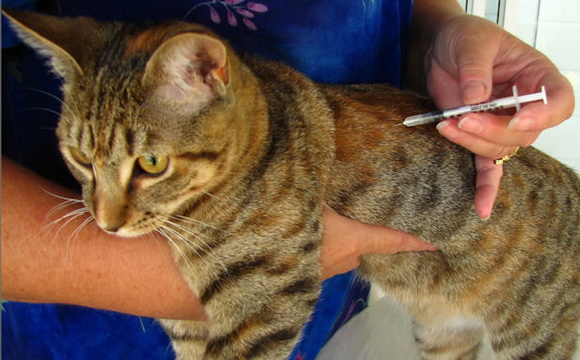Introduction
Vaccinating your cat is crucial for preventing various diseases and ensuring a long, healthy life. This guide outlines essential vaccines, recommended schedules, and factors to consider for feline vaccinations.
Core Vaccines for Cats
Core vaccines are essential for all cats due to the high risk of severe illness. The primary core vaccines include:
- Feline Panleukopenia (Distemper)
- Feline Viral Rhinotracheitis
- Feline Calicivirus
- Rabies
Non-Core Vaccines for Cats
Non-core vaccines are optional and recommended based on the cat’s lifestyle and environment. These include:
- Feline Leukemia (FeLV)
- Feline Infectious Peritonitis (FIP)
- Bordetella
- Chlamydophila
Core Vaccines: Detailed Overview
- Feline Panleukopenia (Distemper)
- Efficacy: High
- Immunity Duration: > 1 year
- Adverse Effects: Low to Moderate
- Feline Viral Rhinotracheitis
- Efficacy: High; reduces severity and duration of disease
- Immunity Duration: > 1 year
- Adverse Effects: Low; may cause sneezing with modified live vaccine
- Feline Calicivirus
- Efficacy: Variable; reduces severity and duration
- Immunity Duration: > 1 year
- Adverse Effects: Low; possible sneezing with modified live vaccine
- Rabies
- Efficacy: High
- Immunity Duration: Varies by vaccine type
- Adverse Effects: Low to Moderate; lower with recombinant vaccines
Non-Core Vaccines: Detailed Overview
- Feline Leukemia (FeLV)
- Recommended For: Outdoor cats, kittens
- Immunity Duration: Variable; revaccinate annually
- Adverse Effects: Vaccine-related sarcomas with killed vaccines
- Feline Infectious Peritonitis (FIP)
- Efficacy: Low
- Recommendation: Not generally recommended
- Bordetella
- Efficacy: Low
- Immunity Duration: Short
- Adverse Effects: More severe in kittens
- Chlamydophila
- Efficacy: Low; reduces severity and duration
- Immunity Duration: < 1 year
- Adverse Effects: High
Vaccination Schedule for Cats
Kittens
- 6-7 weeks: Combination Vaccine (Feline Distemper, Rhinotracheitis, Calicivirus)
- 10 weeks: Combination Vaccine, Chlamydophila if needed
- 12 weeks or older: Rabies
- 13 weeks: Combination Vaccine, Chlamydophila, FeLV for at-risk kittens
- 16 & 19 weeks: Combination Vaccine, FeLV for at-risk kittens
Adults
- Boosters: Combination Vaccine, Chlamydophila, FeLV for at-risk cats, Rabies
Factors Influencing Vaccination Decisions
Vaccination decisions should consider:
- Age, Breed, and Health Status: Younger cats and certain breeds may have different requirements.
- Exposure Risk: Outdoor cats or those exposed to other animals might need additional vaccines.
- Geographical Area: Disease prevalence varies by region.
- Type of Vaccine: Modified live virus (MLV) vaccines are generally preferred over killed vaccines for faster and longer immunity.
Consultation with Your Veterinarian
Always consult with your veterinarian to tailor the vaccination schedule to your cat’s specific needs. They can provide guidance on the best vaccines and schedules based on your cat’s health and lifestyle.
References and Further Reading
- Ford, R.B. Feline Vaccination Guidelines
- Greene, CE; Schultz, RD. Immunoprophylaxis
- Klingborg, DJ et al. AVMA Council on Biologic and Therapeutic Agents’ report on cat and dog vaccines
- Levy, J et al. 2008 American Association of Feline Practitioners’ feline retrovirus management guidelines
- Richards, JR et al. The 2006 American Association of Feline Practitioners Feline Advisory Panel Report
For more detailed information, visit [Cat Vaccines and Vaccination Schedule](https://catsplace.org/cat-vaccines.
Conclusion
Vaccinating your cat is a critical a

